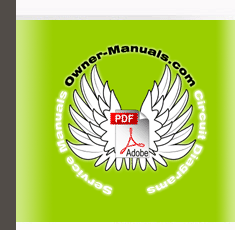|
|
|
Who's Online
There currently are 5959 guests online. |
|
Categories
|
|
Information
|
|
Featured Product
|
|
|
 |
|
|
There are currently no product reviews.
 ;
the manual is in quite good quality and it's in pdf. manual was send in less then 6h.
 ;
Absolutely top, I've got now all Service-Manuals I'll need to repair my Mackie-Mixer!
 ;
The service manuel is very helpful, we where able to restore the device to its working operation again.
 ;
Great quality complete service manual!!! complete parts list and drawings
 ;
Again a great job. I never been disilluted from them! Clear scheme, complete and very good for repairing!
AV-27D201 AV-32D201
REPLACEMENT OF CHIP COMPONENT
! CAUTIONS
1. 2. 3. 4. Avoid heating for more than 3 seconds. Do not rub the electrodes and the resist parts of the pattern. When removing a chip part, melt the solder adequately. Do not reuse a chip part after removing it.
! SOLDERING IRON
1. Use a high insulation soldering iron with a thin pointed end of it. 2. A 30w soldering iron is recommended for easily removing parts.
! REPLACEMENT STEPS
1. How to remove Chip parts # Resistors, capacitors, etc (1) As shown in the figure, push the part with tweezers and alternately melt the solder at each end.
2. How to install Chip parts
# Resistors, capacitors, etc (1) Apply solder to the pattern as indicated in the figure.
(2) Shift with tweezers and remove the chip part.
(2) Grasp the chip part with tweezers and place it on the solder. Then heat and melt the solder at both ends of the chip part.
# Transistors, diodes, variable resistors, etc (1) Apply extra solder to each lead.
# Transistors, diodes, variable resistors, etc (1) Apply solder to the pattern as indicated in the figure. (2) Grasp the chip part with tweezers and place it on the solder. (3) First solder lead A as indicated in the figure.
SOLDER
SOLDER
A (2) As shown in the figure, push the part with tweezers and alternately melt the solder at each lead. Shift and remove the chip part. B
C (4) Then solder leads B and C.
A B Note : After removing the part, remove remaining solder from the pattern. C
No.51686
9
|
|
 |
> |
|
